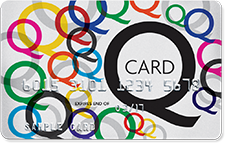How to avoid fuel contamination

Fuel contamination is, as the name suggests, fuel that becomes contaminated or tainted with algae, water, rust, sediment and organic matter that collects toward the bottom of fuel tanks.
Contaminated fuel is not easy to avoid. Especially as you have no way of checking its quality before filling up your fuel storage container.
Fuel contamination can be expensive
Contaminated fuel can wreak havoc on your petrol-powered tools and end up costing you thousands to repair or replace. This is why it’s so important to take proactive steps to minimise the risk of it happening to you. Contaminants can form resins and gums in your fuel, which can be drawn through your fuel systems causing irreparable damage.
By following the steps listed below, you should be able to refuel your tools with confidence, while helping keep them in excellent condition. It’s important to remember that fuel contamination can happen at home, too, so proper maintenance and storage of your tools and your fuel is key. Save your tools, save your sanity and most importantly, save your money.
Top tips to avoid fuel contamination
Fill up from a reputable service station
Select a service station that has a high volume of traffic with a good reputation. A busy service station essentially means its tanks are being refuelled with fresh fuel more often, lowering your risk of picking up stale fuel.
Avoid filling up when the service station is being refueled
Most in-ground service station fuel storage tanks have built-in protection in the form of sediment collectors. Under normal operation, the fuel pick up from an in-ground tanks draws clean fuel from well above these levels, ensuring you receive good quality clean fuel. When fuel levels are low and a tanker pumps fresh fuel into the tanks, it may disturb any sediment present. So while it may be easy to think that filling up fuel right after the service station has been refuelled will ensure you receive fresher fuel, you may also pick up contaminants that have been stirred up from the bottom of the tanks during the process.
Change your fuel filter regularly
Your first line of defence against fuel contamination is your fuel filter. Fuel filters are quite effective at capturing contaminants while they are in good order. However, if they become soiled, they may become ineffective. Keeping a regular service schedule that includes replacing your fuel filter is the best way to prevent potential contaminated fuel related damage.
Use a fuel stabiliser
A fuel stabiliser is a fantastic addition to fuel that may sit for periods of time, be it in your tool, fuel tanks or a dedicated fuel container. It’s recommended that you empty the fuel from your tools when you won’t be using them for a few months. This helps keep your fuel fresher for longer, and prevents oxidation and contamination when not in use. The amount of fuel stabiliser you will use will depend on the amount of fuel you want to protect.
It is recommended to avoid mixing up more than a one month supply of fuel at any one time. Unleaded fuel can go stale quickly once exposed to the atmosphere. It may look and smell fine, but it will most likely cause poor performance. For this reason, it’s recommended that you safely dispose of any unleaded petrol that has been stored for more than four months and replace it with fresh fuel. This also limits the risk of contamination and damage occurring.
Use a dedicated fuel storage container
When it comes to storing your fuel, you need to use a fuel storage tank that will not deteriorate over time. Ensuring that your fuel storage tank has an airtight seal is also vital. Never use a receptacle not designed for storing fuel in. These not only increase the risk of air and moisture entering the tank, but could also expand or leak over time.
How and where you store your fuel container is also important. Avoid leaving it in areas that receive direct sunlight or exposure to extreme temperatures, or wet weather. Containers not designed for fuel can contract and expand with the hot and cold weather, which can cause micro splits to occur. These small cracks will allow the external atmosphere to enter the tank and cause the fuel to spoil quickly.
Never try to stretch your fuel
This is common practice for many home gardeners trying to save a few dollars, and one that destroys tools in the blink of an eye. Fuel stretching involves adding a substance into the mix to dilute it as much as possible to make it last longer. One of the most common additives is kerosene. The burning of kerosene or similar chemicals may result in sticky residues that can clog up the fuel system and engine.
Use a fuel testing kit before filling tools
If you have doubts about the oil to fuel ratio, then you can take advantage of a home fuel testing kit. These simple test kits allow you to see if oil is present in your fuel and in what ratios. Typically, if there is no oil present in the fuel, the reactant solution will remain clear. If there is a sufficient amount of oil in the fuel, then the reactant will turn opaque. After a little bit of time has elapsed, the test will return to being clear again. To check the sample again, simply shake it to see the result.
Drain your tanks when not in use
If you are storing your tools for longer than a month at a time, then the best thing you can do to avoid fuel contamination is to empty them first. This has two beneficial effects. The first is that it prevents damage to the tool itself and prevents resins and gums from developing. The second benefit is that the fuel can be kept free from contamination in an airtight fuel storage container.

